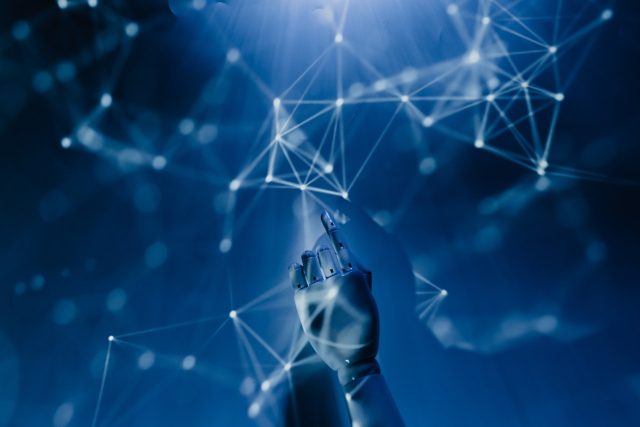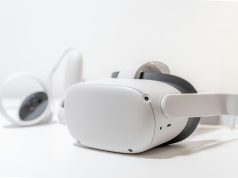
Both artificial intelligence (AI) and the Internet of Things (IoT) are two of the most promising emerging technologies. Over time, these two have come together to form the Artificial Intelligence of Things (AIoT) – a transformation that offers virtually limitless potential across numerous industries.
AI and IoT together hold the key to elevating smart technology and delivering on the promise of connected systems as the future of industry.
What Is AIoT?
IoT devices gather information and data through the internet, which can then be communicated with other devices. These devices have sensors, software, and processing capability to enable communication and amass a wealth of data – roughly 1 billion GB.
Based on research from Transforma Insights, the number of connected devices is expected to grow to 24.1 billion in 2030 with a revenue potential of $1.5 trillion. But with that comes a massive growth of data, which threatens to overwhelm these devices.
Businesses are already amassing more data than ever before, often at a higher capacity than what can be realistically processed and analyzed for actionable insights. If the data increases, it’ll only prove more difficult for these devices manage.
With its self-learning capabilities, AI offers a solution to this growing problem. Coupled with IoT devices, AI can process and analyze data in real time – at a much faster rate than humans – to make use of the information. Together, these technologies provide a realistic way for adoption to increase across industries.
What Are the Core Principles of AIoT?
IoT has the following principles:
- Data collection using devices and sensors
- Data storage in a scalable storage system
- Data processing and analysis
- Real-time decisions based on data insights
- Best practices for controlling devices
With AI, IoT devices serve as an intermediary between the controller and the device, providing in-depth insights based on comprehensive, accurate, and recent data. This process happens quickly, eliminating the need for data to be transmitted, processed, and analyzed by humans to develop a decision or strategy, which would then need to be sent to the device to apply it.
In short, AIoT removes the human decision-making from the process for more rapid actions. AI can process the information and prioritize it more effectively than humans, which is essential for situations that require rapid responses.
For example, AioT can be used in an imaging system that is tasked with scanning a data field to analyze specific images. With the use of AI, the system would select only the relevant frames to relay to the controller to reduce the burden of excess, irrelevant data.
Benefits of AIoT to Businesses
AIoT has well-known benefits and remarkable future potential across a variety of industries.
Real-Time Monitoring and Decision-Making
The real-time monitoring capability of AIoT not only saves time, but it reduces disruptions in business. These devices can supervise systems to identify unusual activities or potential issues, as well as intervening on its own without the need for a human. Thee are no delays as human decision-makers wait for information and develop a plan before it can be executed.
More Operational Efficiency
AIoT helps businesses reach maximum operational efficiency by generating and analyzing data, identifying key patterns, and delivering rapid insights. Because it’s constantly learning, AI has the capacity to detect and correct problems before the begin, leaving only mission-critical decisions to humans.
Reduced Costs
AIoT devices are a key factor in reducing operational costs and improving cost effectiveness. These devices can monitor and adjust parameters like light and temperature to conserve energy, automate tasks, and perform maintenance only when necessary to keep systems running smoothly.
Better Risk Management
Risk management is essential for virtually every industry. With AIoT, devices can take in information to assess risk and evaluate possible preventative measures. All of these decisions are based on both current and historical information, giving organizations a strong posture to mitigate problems before they begin.
Examples of AIoT in Action
AIoT has many exciting use cases, but here are some of the most promising:
Healthcare
Both AI and IoT have made their way into healthcare, particularly with wearable devices like smart watches and monitors. These devices track user performance, health statistics, and preferences. While the consumer may use smart watches for exercise, this information can be of use to physicians to track patient health and identify possible problems.
Traffic Monitoring
Smart cities are one of the best possible solutions to increasing populations in urban areas. AIoT devices have many uses in smart cities, including traffic analysis to improve traffic flow and ease congestion in crowded urban environments. It can also detect possible accidents and respond to traffic violations to keep the road safer.
Smart Buildings
Another aspect of a smart city, smart buildings are essential to improving quality of life and reducing energy use. Smart buildings monitor environments to optimize resources like heating, cooling, and lighting, based on occupancy, to keep costs down without compromising comfort.
Autonomous Vehicles
Autonomous and semi-autonomous vehicles are designed to drive from point A to point B without human intervention. This can be used not only on the consumer level, but for major industries like public transportation, emergency response, and shipping. Because autonomous vehicles rely on rapid-fire decisions to be safe, AIoT is essential to making them a reality.
Manufacturing
Both AI and IoT have been used in manufacturing automation, but AIoT takes it a step further with precise automation capabilities, better quality control, and predictive maintenance capabilities to keep manufacturing processes running smoothly.
Planning for AIoT in the Future
It’s clear that AI is a critical component of successful IoT adoption in the future. With its enhanced capabilities to identify, predict, and react without the need for human input, AIoT has enormous potential for the next industrial revolution.
In collaboration with Guido Voigt.
Guido Voigt is the Director of Engineering, at Lantronix, a global provider of turnkey solutions and engineering services for the internet of things (IoT). Guido’s and Lantronix’s goal is to enable their customers to provide intelligent, reliable, and secure IoT and OOBM solutions while accelerating time to market.













